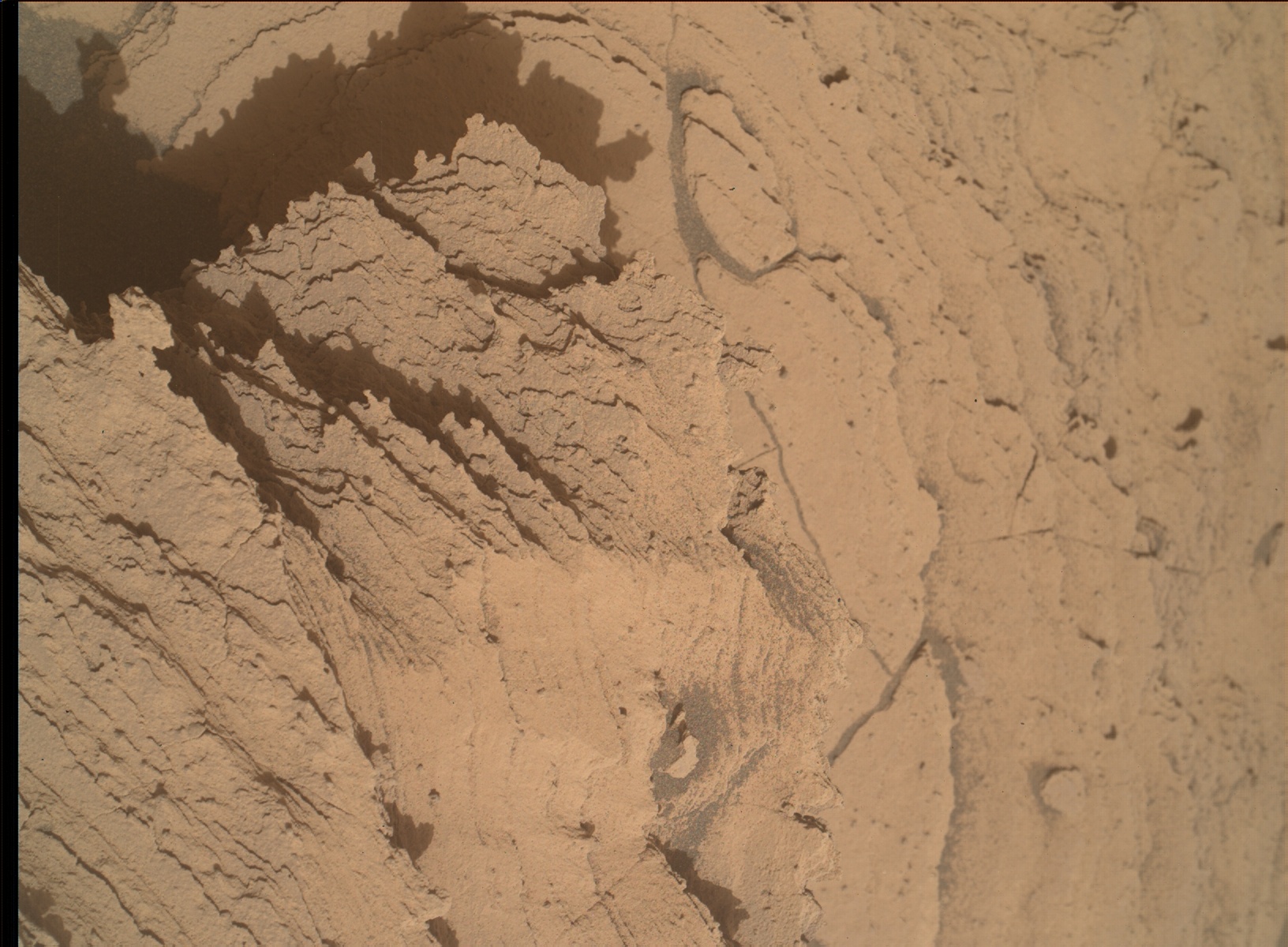4 min read

Earth planning date: Monday, October 16, 2023.
We are just at the first steps of the next drilling campaign, as regular readers of this blog will certainly have spotted already. The last plan had the preload test, that little dent we make into the rocks to gauge how both the rock and the rover’s arm will react to the pressures and stresses of the drilling. It’s a good forecast, but rocks are natural materials, and sometimes they just decide to break. Remember that Groken drill hole? I don’t blame you, if not, because the blog about it is just three days short of three years old! You can find it here if you want to go down memory lane! Fred Calef decided to use the image of the broken off rock piece (which also got additional attention with the analytical instruments) for his title image!
I have picked the ‘arm on the rock’ image above, because I simply love to see instruments on the rocks. But what became of our preload test? Well, it’s a little more complex as engineers weren’t quite sure we’d passed all tests for quite a while into planning. That’s not to say that there was any specific problem, just that the numbers were complex enough to analyse that the time between when our engineers got them and the start of planning wasn’t quite enough. So, we were told to ‘stand by’ … that was at 4 pm in the UK, which is where this blogger is located. While the engineers looked at the downlink, the scientists made the most of that ‘stand by’ situation, assumed success and we started the planning process for the science observations we’d like in the plan.
The plan has the actual drill of the Sequoia drill site and the cadence of observations to characterise the drill hole and the fines, starting with Mastcam and ChemCam imaging. ChemCam also targets ‘Sharktooth’ with a LIBS measurement, a target that was chosen to be in the same layer as the drill to compare chemistry. Finally, Mastcam looks – again – at the change detection location to see if we can make out any wind action.
The science activities in the plan are short today as the drilling is very power intense and of course the main focus in the plan. About an hour into planning, when we had completed our work, the mission scientist came back to give us an update and told us to … you guess it: ‘stand by’. He could give us a green light for submission of our desired science activities as the analysis showed that chances were getting higher and higher that all the numbers would be looking good at the end of the analysis. So, we submitted our plan, although it was not yet totally clear if we could actually drill. That said, our optimism had been upgraded to a 95 % confidence level that we could actually drill. What else? Well, to continue to ‘stand by’ of course! We went into the next meeting to go over the entire plan, still on ‘stand by’ for the final verdict on the ‘go’ for drilling. At that point, it was 7 pm over here. Some assessments are just a little more complex than others… and ‘Better be safe than sorry’ as we say here in the UK. So, even after that meeting had finished, we were still on ‘stand by’ for the final go/no go decision on the drill.
Now, go or no go? Did we send the drill command? Well, at 19.47 pm UK the final verdict was delivered and the decision was made that we are go for drilling! So, with the numbers all analysed, we got the go for drilling and our plan was sent to Curiosity. We are all awaiting to see the new kid of the drill hole family soon! If you want to see what the first 36 of them look like… here you go!
Written by Susanne Schwenzer, Planetary Geologist at The Open University







